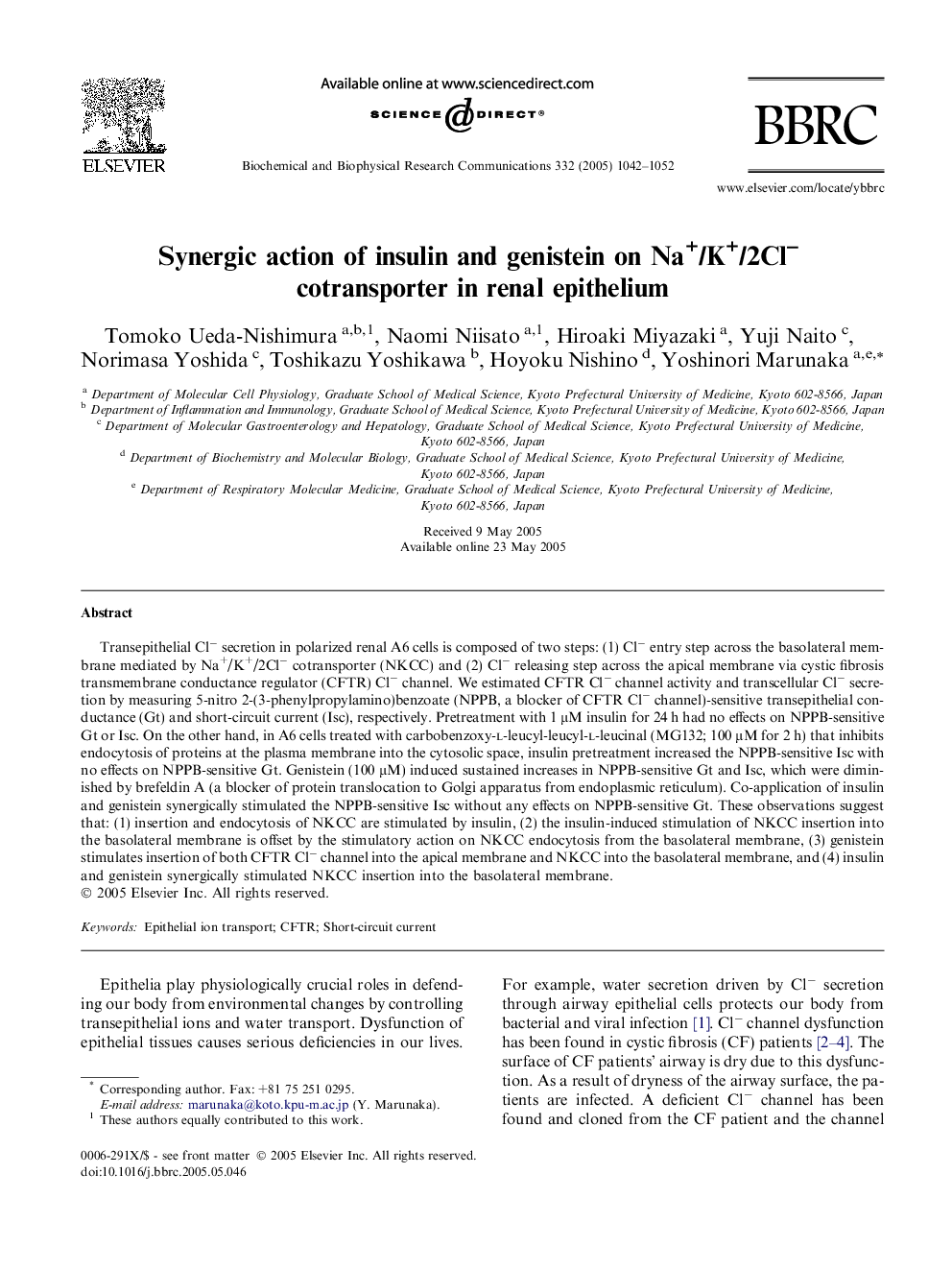| Article ID | Journal | Published Year | Pages | File Type |
|---|---|---|---|---|
| 10768945 | Biochemical and Biophysical Research Communications | 2005 | 11 Pages |
Abstract
Transepithelial Clâ secretion in polarized renal A6 cells is composed of two steps: (1) Clâ entry step across the basolateral membrane mediated by Na+/K+/2Clâ cotransporter (NKCC) and (2) Clâ releasing step across the apical membrane via cystic fibrosis transmembrane conductance regulator (CFTR) Clâ channel. We estimated CFTR Clâ channel activity and transcellular Clâ secretion by measuring 5-nitro 2-(3-phenylpropylamino)benzoate (NPPB, a blocker of CFTR Clâ channel)-sensitive transepithelial conductance (Gt) and short-circuit current (Isc), respectively. Pretreatment with 1 μM insulin for 24 h had no effects on NPPB-sensitive Gt or Isc. On the other hand, in A6 cells treated with carbobenzoxy-l-leucyl-leucyl-l-leucinal (MG132; 100 μM for 2 h) that inhibits endocytosis of proteins at the plasma membrane into the cytosolic space, insulin pretreatment increased the NPPB-sensitive Isc with no effects on NPPB-sensitive Gt. Genistein (100 μM) induced sustained increases in NPPB-sensitive Gt and Isc, which were diminished by brefeldin A (a blocker of protein translocation to Golgi apparatus from endoplasmic reticulum). Co-application of insulin and genistein synergically stimulated the NPPB-sensitive Isc without any effects on NPPB-sensitive Gt. These observations suggest that: (1) insertion and endocytosis of NKCC are stimulated by insulin, (2) the insulin-induced stimulation of NKCC insertion into the basolateral membrane is offset by the stimulatory action on NKCC endocytosis from the basolateral membrane, (3) genistein stimulates insertion of both CFTR Clâ channel into the apical membrane and NKCC into the basolateral membrane, and (4) insulin and genistein synergically stimulated NKCC insertion into the basolateral membrane.
Related Topics
Life Sciences
Biochemistry, Genetics and Molecular Biology
Biochemistry
Authors
Tomoko Ueda-Nishimura, Naomi Niisato, Hiroaki Miyazaki, Yuji Naito, Norimasa Yoshida, Toshikazu Yoshikawa, Hoyoku Nishino, Yoshinori Marunaka,
